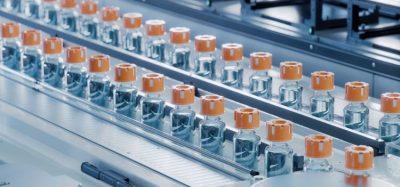Wyeth’s PAT variations submitted through the EMEA Worksharing Procedure
Posted: 19 June 2008 | | No comments yet
In June 2006, the EMEA called for nominations from companies to participate in the pilot phase of a worksharing exercise for Quality variations1. Worksharing is a key element in the revisions to the variations proposed by the European Commission, which are intended to streamline the process for making changes to Marketing Authorisations, reducing the regulatory burden and encouraging innovation2. The worksharing procedure is intended where variations to the same nationally authorised product are submitted to the different National Competent Authorities (NCAs). All NCAs are eligible i.e. potentially all 29 EU/EEA states could be involved in the procedure.


In the pilot phase, the procedure is limited to variations introducing elements of process analytical technology (PAT) and/or a design space as described in ICH Q8, where this includes PAT principles. The pilot phase is limited to five applications for variations and the criteria for selection included:
- Number of affected member states
- Similarity of dossiers
- Expected submission date
- Complexity of the proposed PAT application
The intent for the worksharing procedure was to have a single outcome through a harmonised assessment (involving the EMEA PAT team) with a defined timeframe, in contrast to the conventional procedure whereby each country would conduct an assessment of the variation application, potentially resulting in multiple outcomes and timetables for the approval of the variation by each country. The assessment would benefit from pooling the available expertise, streamlining the assessment, and national agencies would benefit from the introduction of a resource efficient mechanism.
At Wyeth, we recognised that the opportunity to participate in this pilot programme could realise a number of benefits. It would increase our understanding of the preparation, submission and assessment of Quality by Design (QbD) and PAT-related applications within Europe. This was strategically important because we anticipated the potential need for post-approval variations in Europe for the products that had been submitted as part of the FDA CMC pilot for Quality by Design submissions. For these products we had prepared a core global submission package but, because of the differences in the regulatory procedures in the various countries and regions, ongoing development of the PAT technology for the manufacturing process while the submissions are being assessed could result in a situation where the EU submission would need to be updated to make it consistent with the submission approved by the FDA. A successful outcome from the worksharing procedure could also realise financial and other business benefits associated with any proposed change, such as the ability to implement these changes faster and with a lower compliance burden because of the single outcome and defined timetable.
We also recognised that there were some risks associated with participation. These included the possibility that a single outcome would not be achieved because the procedure was voluntary and the NCAs are not legally bound to accept the decision reached during worksharing. Typically, a manufacturing site supplying European markets will also supply other markets outside of Europe, so a successful outcome from the worksharing procedure would still need approval of the change in these other markets for the manufacturing facility to avoid the increased complexity resulting from operating multiple versions of manufacturing process. Although we now had some experience of preparing a Quality by Design submission for a new product, it was clear that working with a product in the commercial phase of its lifecycle would present different opportunities and challenges. For example knowledge gained from the manufacturing experience could be helpful but there might also be gaps in knowledge because the product would most probably have been developed some years ago. Many companies have applied their QbD or PAT projects on newer products that will typically have been registered through the European centralised procedures and as a consequence these products would not be eligible for the worksharing pilot.
The initial challenge was to identify potential variations for the pilot programme that could meet most, or all, of the inclusion criteria. We identified two products that were nationally authorised in a number of European markets, where the Marketing Authorisations were sufficiently similar and where some QbD and or PAT work was in progress. The FDA PAT Guidance3 defines PAT as:
‘A system for designing, analysing and controlling manufacturing through timely measurements (i.e., during processing) of critical quality and performance attributes of raw and in-process materials and processes, with the goal of ensuring final product quality’
The Guidance goes on to note that:
‘…the term analytical in PAT is viewed broadly to include chemical, physical, microbiological, mathematical, and risk analysis conducted in an integrated manner’
Also that:
‘An appropriate combination of some, or all, of these tools may be applicable to a single-unit operation’
- Multivariate tools for design, data acquisition and analysis
- Process analysers
- Process control tools
- Continuous improvement and knowledge management tools
After discussions with the experts at the manufacturing sites, two potential variations for one of the products were identified that could include PAT elements and/or the use of PAT tools, and the outstanding work for the variations could be completed in a timeframe that would allow submission during Q2 2007. A multi-functional team was established and the scope of the potential variations agreed. Following senior management endorsement these were proposed to the EMEA during Q4 2006 and accepted into the pilot phase of the worksharing project.
The product and proposed variations to the manufacturing process
The product concerned is presented as encapsulated spheroids which have a controlled release coating. It is manufactured at a number of locations around the world and was developed in the late 1980’s / early 1990’s. This obviously precedes the publication of ICH Q8R (step 2), where enhanced Quality by Design principles are described, but good scientific principles were applied during development of the product and subsequently extensive successful manufacturing experience had been gained. The Critical Quality Attributes (CQAs) for the finished product that were of primary interest were the dissolution and drug content (assay and content uniformity). An overview of the manufacturing process is shown in Figure 1. Several granulations are produced and the resulting spheroids combined to give a load for the coater and the yield from the coating operation (a sub-batch) may be combined in multiple sub-batches to give a batch for encapsulation. It should be noted that the individual sub-batches must meet the specifications – the blending process is not a technique for bringing ‘failing’ sub-batches into specification. The variations proposed were:
- Variation 1: Variable quantity of water for the granulation to produce the wet mass for extrusion
- Variation 2: Elimination of redundant in-process testing because of the ability to predict the results from upstream test results
Variation 1
The registered process employed a fixed quantity of water in the granulation process used to produce a wet mass suitable for extrusion and subsequent spheronisation. It was found that variability in a major excipient caused some variability in the size distribution of the spheroids. Although this was controlled by downstream processing prior to the coating operation, the variability still affected the yield from the process. The relationship between the properties of the excipient and quantity of water required to give a wet mass with the required properties is imperfectly understood, and therefore it is not yet possible to predict the quantity of water required by measuring the physicochemical properties of the excipient. So, instead it was proposed to vary the quantity of water as necessary to produce a wet mass giving the maximum yield of spheroids of the correct size.
A design of experiments approach was used to study the granulation at small-scale. A screening study was used to identify the most significant variables, which were then studied using a response surface design. A multivariate design space was established for the production of uncoated spheroids and a model developed to relate the quantity of water added to the yield of in-specification spheroids. A number of commercial scale batches were used to verify that the quantity of water could be varied without affecting the finished product CQAs of interest.
For monitoring and control of the process, data from an at-line analyser is used, in conjunction with a model developed from the experimental work, to adjust the quantity of water used in the granulation. The aim is to give a wet mass that after extrusion and spheronisation produces an optimum distribution of uncoated spheroids, and thereby maximises the yield at this step in the process.
Variation 2
This variation concerned the elimination of redundant in-process testing, specifically testing of coated spheroids carried out after blending. In the registered process the coated spheroids are tested at three points in the process: after the coating operation (as a sub-batch), after blending several of the sub-batches of coated spheroids into a larger single batch for encapsulation, and after encapsulation. The variation proposed the elimination of testing at the second point, i.e. of the blended spheroids prior to encapsulation, because the results obtained at this point could be predicted from the results obtained from the first tests on the coated spheroids as a sub-batch.
Graphical and statistical analyses were carried out on a random selection of recently manufactured batches to evaluate assay and dissolution. Individual value plots, boxplots and scatterplots were used to visually compare the predicted and actual values. Descriptive statistics (mean, standard deviation etc.) were used to indicate what difference, if any, existed. Initially an Anderson-Darling test for normality was applied and, if both data sets were normally distributed, a Paired T-test examined the hypothesis that there was no statistically significant difference between them. Where data was not normally distributed a Wilcoxen test was performed to test for evidence of difference. The analyses demonstrated that the assay and dissolution results of the blended spheroids could be predicted from the results of the individual sub-batches comprising the blend. Since the results from the blended spheroids were used to set the fill weight for encapsulation, analyses were also performed to show that the results from the sub-batches could be used in a similar manner.
Quality risk management
Informal risk assessments were conducted when developing the data and considering the proposed changes for each of the variations. However, we wanted to conduct and present the results of a formal risk assessment, consistent with the principles described in ICH Q9, of the impact of the proposed change in each variation. After conducting training for the team, a risk assessment tool that had been developed and used for some time at another manufacturing site was employed. The assessment of the impact of the various failure modes identified for each change was conducted and documented using the tool and a summary of the assessment included in the variation.
Application of prior knowledge
The manufacture of spheroids using extrusion-spheronisation is a widely-used and proven technology. A considerable body of scientific literature exists for this technology and Wyeth had also employed external experts on a number of occasions. Wyeth has an extensive, successful manufacturing history for the product and considerable knowledge gained from the development studies and commercial experience of this product, and also related products manufactured by Wyeth. Appropriate citations and references to this prior knowledge were made to support the approaches and conclusions presented in the variations, and in communications with the Rapporteurs.
Flexible regulatory approaches
A number of areas were identified where ‘flexible regulatory approaches’ might be possible. For example, for both variations data from specific prior stability studies was not submitted. Arguments were presented to demonstrate that such studies were inappropriate and/or unnecessary because of the prior knowledge and product and process understanding. For variation 1, the variable quantity of water for the granulation, arguments were presented to explain why the conventional ‘three batch’ validation approach was inappropriate. Instead a continuous quality verification approach has been proposed for implementation of this change.
Preparation and submission of the variations
The EMEA has published a reflection paper4 that suggests information to be included in dossiers when PAT is employed, but because of the nature of the variations and the novelty of the procedure we requested a pre-submission meeting with the Rapporteurs and EMEA. This was an informal meeting (i.e. it was not part of the formal Scientific Advice procedure) and proved to be extremely useful. We were able to discuss various scientific aspects of the submissions and confirm the validity of our proposed approach. In addition we were able clarify and agree upon various procedural aspects, for example the timetable for submission including the ‘first wave’ and ‘second wave’ market filing dates, clock start and likely inspection date for the manufacturing facility. ‘Second wave’ markets were those countries that requested the variations be filed once the Rapporteur reports were available i.e. at Day 90. The pre-approval inspection of the GMP aspects of these variations at the manufacturing facility was completed by a team (i.e. assessor and inspector) from one of the Rapporteurs during October 2007.
Conclusions
This project finally involved Wyeth submitting over 100 variations to NCAs as part of the worksharing procedure. This number of variations gives some idea of the complexity and effort involved in making two changes to a manufacturing process where there are multiple markets, product strengths and associated variations needed to ensure harmonised Marketing Authorisations. It also demonstrates why initiatives from the European Commission and EMEA that seek to streamline the regulatory process should be welcomed.
We found that the process of developing and preparing the variations was valuable in helping to develop our understanding of the concepts described in the various guidance documents and how they could be applied to an existing product. Communication and discussions with the representatives of the EMEA and Rapporteurs, especially the pre-submission meeting as noted above, but also during the manufacturing facility inspection, have also been very useful in increasing understanding and building confidence. This reinforces the importance of interactions with Boards of Health around the world, either as individual companies or through trade associations, to facilitate global implementation of the concepts described in ICH Q8, 9 and 10 and the other guidance documents from the FDA and EMEA etc.
At the time of writing, positive assessment reports have been received for both variations and approvals from the National Competent Authorities.
References
- Procedure for worksharing – Quality variations. EMEA/120457/2006
- EC Draft Variations Regulations and Public Consultation Paper Version. 24th October 2007 (http://ec.europa.eu/enterprise/pharmaceuticals/varreg/ index.htm)
- Guidance for Industry. PAT – A Framework for Innovative Pharmaceutical Development, Manufacturing, and Quality Assurance. September 2004
- Reflection Paper: Chemical, pharmaceutical and biological information to be included in dossiers when Process Analytical Technology (PAT) is employed. EMEA/INS/277260/2005.









